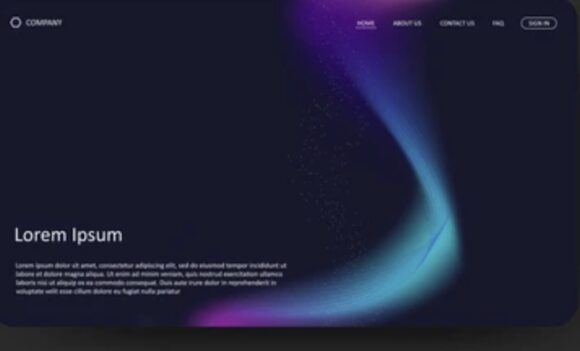Catching someone’s attention online is tricky when there are thousands of headlines popping up everywhere, so headline writing tips are essential. I know how easy it is to glaze over articles if the headline doesn’t grab you in a split second. But learning how to write headlines that stand out is a skill anyone can build. A headline can turn a casual browser into a reader, and even a loyal follower if you nail it.
Even the best written content sometimes goes unnoticed when the title falls flat. When I started blogging, I spent more time refining headline styles than writing entire articles. The payoff? More clicks, better engagement, and a real boost in search traffic. I’ve tried dozens of headline formulas over the years and developed a routine for testing what works and why some headlines fizzle out.
I’m breaking down my best headline writing tips here to help you create titles that are catchy, practical, and search-friendly. Even if you don’t consider yourself a writer, once you get the basics down, you’ll see headline writing as a creative part of content, not just a last minute task. And yes, nailing strong headlines is a skill you can grow with some practice.
Know Your Audience Before You Write
Understanding who you’re writing for helps everything fall into place, especially headlines. When I write a blog post about freelancing, I know my audience wants practical tips, timesaving ideas, and relatable stories. Headlines that speak to their exact needs work much better than generic ones.
Questions I Ask About My Readers:
- What problem are they trying to solve?
- What language feels natural to them?
- Are they looking for quick tips or deep dives?
- What emotions do they care most about (avoiding stress, saving money, learning something fun)?
Example Audience Driven Headlines:
- “Simple Tricks to Save Time on Your Freelance Projects”
- “How to Write Blog Headlines That Actually Get Clicks”
- “A Beginner’s Guide to Crafting Catchy Titles”
Making it personal to your audience is always worth the effort. It turns what could be generic content into something meaningful and memorable. One way to get even more insight is to scan comments or forums where your audience hangs out. By listening to the exact words they use when discussing their struggles or desires, you can borrow those phrases to make your headlines directly relevant. People naturally respond better when they see themselves reflected in a title.
Use Numbers and Power Words
When I’m stuck on headlines that just don’t sound punchy enough, I toss in a number or two. Numbered lists appeal because they promise a quick, scannable experience. Power words add a sense of excitement or urgency. Combining these makes your headline lively and hard to scroll past.
Good Examples:
- “7 Ways to Grow Your Email List Fast”
- “The Ultimate Guide to Creative Blog Post Ideas”
- “5 Mistakes I Made Writing Headlines (and How You Can Avoid Them)”
Numbers suggest the content is organized, quick to digest, and actionable. Power words such as “easy,” “secret,” “proven,” and “surprising” make readers curious. And you can mix these up with emotional hooks. Sometimes, a word like “essential” or “little known” can give your title that extra pop. Don’t be afraid to experiment and check which power words get the best response for your niche.
Clear, Not Clever: Make the Promise Obvious
I’ve tried witty headlines that only made sense after reading the article, but those usually flopped. People are busy and want to know exactly what they’re getting. Clarity wins every time over cleverness. If someone has to read your headline twice to figure out what it’s about, you’re likely to lose them. Directness may not always feel novel, but it consistently gets the job done.
Clarity Checklist:
- Does the headline mention what readers will learn or gain?
- Would someone understand the headline in two seconds or less?
- Is there jargon or wordplay that could confuse people?
For example: Instead of “Unlocking the Power of H2O for your Garden,” which is a bit cryptic, use “How to Water Your Garden for Healthy Plants”. This clears things up fast and shows the benefit up front. Remember, the easier you make things for your reader, the more likely they are to click.
Incorporate SEO Keywords Naturally
Headlines that match what people type into search bars get noticed more, plain and simple. I research phrases that real people use (using tools like Google Autocomplete or Answer The Public) and weave them into my headlines without making them sound awkward. Seamless keyword integration is about matching your phrases to the way your audience speaks, not just stuffing in terms for search engines.
My Quick SEO Formula:
- Identify the main keyword or topic people are looking up.
- Add a benefit or unique angle after the keyword.
- Keep it under 60 characters so it displays nicely in search results.
Example SEO Headlines:
- “Headline Writing Tips for Beginner Bloggers”
- “SEO Blog Title Examples That Drive Traffic”
Fitting keywords feels less forced when you practice, and this small detail boosts your content’s visibility in search results. Over time, you’ll have a sense for which keywords give your posts a real advantage, so keep an eye on your analytics and fine tune as you go.
Play With Headline Formulas
Some headline formats just work better, especially for busy readers or social shareability. I keep a handful of formulas on a sticky note when I’m brainstorming new content. Classic templates save time and almost always spark ideas. Over the years, these formulas have helped me consistently get good results no matter the topic.
Reliable Headline Templates:
- How-To: “How to [Do Something] in [Specific Time/Steps]”
- List: “X [Tips/Tricks/Ideas] for [Benefit/Goal]”
- Question: “Are You Making These [Topic] Mistakes?”
- Secrets/Revealed: “The Secret to [Desired Result]”
Rotating these formats keeps my headlines from sounding stale, plus they’re proven to grab attention. Try switching up your headlines with these formulas, and notice which resonate most with your audience. They’re easy to customize and scale for any blog post or article.
Edit, Test, and Compare
I rarely go with my first headline idea. After writing a draft, I brainstorm at least five options, then pick two and compare them. Sometimes a tiny tweak completely changes the impact. A small change in phrasing or focus can double your clickthrough rate.
Editing Tricks I Use:
- Read each headline out loud to check for awkwardness.
- Send my top two to a friend or coworker for a quick vote.
- Use headline analyzer tools (like CoSchedule’s Headline Analyzer or Sharethrough) to see how they rate.
- Track which headlines get more clicks over time, and use those styles more often.
Headline testing shouldn’t feel overwhelming. Even switching a word or cutting down the length can make a noticeable difference. Treat each headline as a mini experiment, and let your analytics guide your adjustments.
Keep Things Honest and Avoid Clickbait
If a headline promises something the article doesn’t deliver, people lose trust fast. When I look back at my early posts, I notice a few clickbait style headlines. Those always led to higher bounce rates and readers not returning. Now, I double check that my headline matches the heart of the content.
Ways to Avoid Disappointing Readers:
- Write the content first, then the headline, so you know the promise is real.
- Avoid exaggerating results or making claims you can’t back up.
- Read your headline and ask, “If I clicked, would I get what I expected?”
An honest headline keeps readers coming back and builds your credibility. It also sets the tone for your brand and your future content. People appreciate transparency, and those positive interactions encourage more shares and engagement in the long run.
Common Questions and Troubleshooting
What if my headline sounds boring?
Spice it up with a number, a benefit, or a power word. Even small tweaks like changing “ways” to “shortcuts” boost excitement. Try flipping the headline structure: sometimes stating the result before the method adds energy. And if you’re out of fresh ideas, scan the latest trending articles in your field for inspiration, then add your own twist.
I can’t fit everything into one headline. What should I focus on?
Pick the single most valuable idea from your content and make that the center of your headline. Subheadings or meta descriptions can cover the rest. If you try to cram too much in, the headline gets cluttered and confusing. Clarity and focus are better than trying to cover every angle up front.
How do I balance SEO and creativity?
SEO keywords belong in headlines, but not at the cost of clarity. Aim for a natural fit. If your keyword feels awkward, see if you can flip the word order or use a related phrase. Creativity comes from how you frame the benefit or urgency, not just the keyword itself.
Headline Writing Recap & Next Steps
Headline writing is both creative and strategic. When I put extra thought into my headlines, everything else gets easier—and especially getting people to actually read what I write! Start by understanding your audience, keep things honest, and use number and power word tricks when it makes sense. Practice a few headline formats and pretty soon, writing catchy titles will feel second nature.
Your Headline Action Plan:
- Pick a piece of your existing content and come up with five fresh headlines for it.
- Ask a friend to vote on their favorite and try using a headline analyzer tool.
- Check which headline drives the best performance (opens, clicks, shares) and keep refining your process!
I’m always experimenting with new headline ideas. Keep testing, and see which styles work best for you. With some small adjustments and steady practice, you’ll see real results over time. The more you refine your approach, the easier and more fun headline writing will get!








Some wonderful advice you have given us here.
I had actually read somewhere that numbers can be included in your headline for more effect, but I had forgotten about it until you reminded me again. 7 Ways to Solve A Problem definitely sound better than how to solve a problem.
Reading headlines (and articles) aloud really also helps to see how they sound to somebody else. This trick works well.
Also you reckon it is better to have a great headline than one that is SEO driven?
I’m so glad you found the advice useful!
You’re absolutely right — numbers in headlines tend to catch the reader’s eye and make the content feel more actionable and specific. “7 Ways to Solve a Problem” really does sound more engaging than a plain “How to Solve a Problem.”
Reading headlines (and even the opening lines) aloud is such a great habit — it helps you hear the flow and catch anything that feels awkward or unclear.
As for your question, ideally, the best headlines balance both impact and SEO. A strong, attention-grabbing headline that also includes relevant keywords is the sweet spot. If you ever have to choose, though, I’d lean slightly toward a compelling headline — because if it doesn’t attract a click, the SEO won’t matter much anyway.
Thanks for sharing your thoughts — really appreciate your insight!